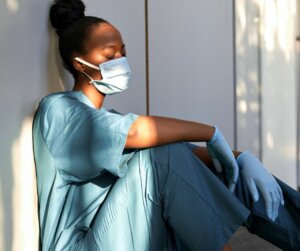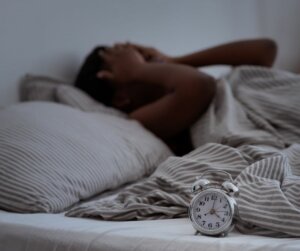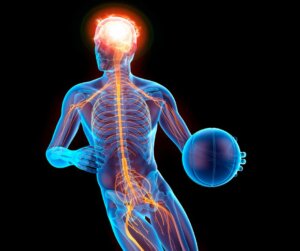




The concept of mental health days off from school has gained traction as of late, with proposals for essential breaks for students in order to address and manage their mental health needs.
One cause for this momentum was the COVID-19 pandemic, which amplified existing academic and social pressures. This crisis, marked by increased reports of anxiety, depression, and emergency visits for mental health concerns, directly impacted students’ academic performance and overall well-being.
Given the clear link between mental well-being and learning, mental health days are not just beneficial but necessary for students’ success and health. This approach is a critical step in supporting students, recognizing the vital role of mental health in education.
Prior to the pandemic, mental health challenges were already a concern; however, the onset of COVID-19 has led to an alarming increase in such cases. Specifically, the Centers for Disease Control and Prevention (CDC) found a 24% rise in emergency department visits for mental health concerns among children aged 5–11 and a 31% increase among those aged 12–17 when compared to the previous year.
These statistics underscore a deepening crisis that demands immediate attention.
This compounded with the pressures of academic expectations and social dynamics, has created a perfect storm for mental health issues among students. The loss of normalcy and the ongoing uncertainty have not only affected students’ mental health but have also posed significant barriers to their ability to learn and engage fully in their educational journey.
As such, the growing mental health crisis among students is not just a health issue but an educational one, calling for comprehensive strategies to support students’ mental and emotional well-being.
• Reducing Stigma: Allowing mental health days fosters a culture where discussing mental health openly is encouraged. This openness benefits students, parents, and educators alike, making mental well-being a shared priority.
• Prioritizing Mental Health: By equating mental health with physical health, schools send a clear message: mental well-being is crucial for student success. This recognition supports students’ overall health and encourages them to take necessary steps for their mental wellness.
• Boosting Academic Performance: Stress negatively impacts learning. The Mayo Clinic agrees that mental health days can reduce stress, leading to better academic outcomes. Students return to school more focused and ready to learn, improving retention and understanding.
• Early Intervention: Mental health days act as a safety net, offering early signs when a student might be struggling. This early detection can lead to timely support, preventing more significant issues and promoting long-term well-being.
By providing mental health days, schools can create a supportive environment that not only enhances academic success but also prioritizes the mental and emotional health of their students.
States across the U.S. are increasingly recognizing the mental health crisis among students through legislation. Arizona, California, Colorado, Connecticut, Illinois, Maine, Nevada, Oregon, Virginia, Washington, and Kentucky have already passed bills allowing students to take mental health days. This legislation varies by state but commonly treats mental health absences as valid and excused, much like sick days.
These laws underscore the growing understanding that mental well-being is as crucial as physical health for academic success. They aim to destigmatize mental health issues, provide students with necessary breaks for self-care, and acknowledge that optimal learning requires mental and emotional wellness.
Implementing mental health days effectively requires clear guidelines and equitable access for all students. Schools should outline when and how these days can be used, ensuring students understand this provision as part of their broader support system. Educators and parents play crucial roles, guiding students on how to use these days for genuine mental health recovery. This collaborative approach ensures mental health days fulfill their purpose: supporting students’ well-being and academic success.
Recognizing when to take a mental health day is crucial, but often harder than it sounds. It requires a level of honesty with yourself that many struggle with. If your state allows for mental health days, keep an eye out for the following key indicators:
• Overwhelming stress or anxiety that impedes daily activities.
• Persistent feelings of sadness, fatigue, or disinterest in usual activities.
• Physical symptoms of stress, such as headaches or stomach aches.
• A recent surge of emotional events, such as conflicts or losses
 Maximizing the Benefit of Mental Health Days
Maximizing the Benefit of Mental Health DaysMental health days should not be spent catching up on homework or studying. The goal is to take a step back from academic pressures, allowing you or the student to return refreshed and with a clearer mind.
To ensure a mental health day effectively aids in a student’s recovery and well-being, consider the following activities:
• Engage in Relaxation Techniques: Practices like meditation, yoga, or deep-breathing exercises can help alleviate stress.
• Spend Time in Nature: A change of scenery, especially in natural settings, can boost mood and reduce anxiety.
• Pursue a Hobby: Encourage students to engage in activities they enjoy but often don’t have time for, such as reading, drawing, or playing an instrument.
• Stay Physically Active: Physical activity is a proven mood enhancer. Even a short walk can significantly impact mental well-being.
• Reflect and Plan: Use the time to reflect on stressors and plan coping strategies for when they return to school.
Prioritizing student mental health doesn’t have to be all or nothing. If offering mental health days is not an option, mental health breaks are. Healium helps students get much needed breaks by helping them escape and recharge, as well as coaching them through the much needed skills they need in learning to self-regulate their emotions.
To learn more about how schools are integrating Healium, watch the video below!
• Immediate Stress Relief: Healium offers quick, immersive escapes that can significantly lower stress levels in just a few minutes, making it a perfect activity for mental health days.
• Skill Building: By using biofeedback, students learn how to control their stress and anxiety, equipping them with valuable skills they can use in and out of the classroom.
• Accessibility: Healium’s VR experiences are designed to be easily accessible, requiring minimal setup and offering a variety of experiences suitable for everyone.
• Evidence-Based: Supported by research, Healium’s effectiveness in reducing anxiety and improving mood is a testament to its potential impact on students’ well-being.
Mental health days are a significant step forward in acknowledging the importance of mental well-being in educational success. By pairing these days with resources like Healium, schools can offer a more comprehensive support system that not only provides a break from stress but also teaches students how to manage their mental health proactively.
Provide your students with the tools to understand, manage, and improve their mental health with Healium. Together, we can create a supportive, resilient, and empowered generation ready to face the challenges of tomorrow.
Explore how Healium can transform mental health days from simple breaks to opportunities for growth and learning.
Our team is here to show you how it works and answer any question you have. Contact us today!
Sarah Hill, a former interactive TV news journalist at NBC, ABC, and CBS affiliates in Missouri, gained recognition for pioneering interactive news broadcasting using Google Hangouts. She is now the CEO of Healium, the world’s first biometrically powered VR/AR channel, helping those with stress, anxiety, insomnia, and other struggles through biofeedback storytelling. With patents, clinical validation, and over seven million views, she has reshaped the landscape of immersive media.
Emotional regulation plays a pivotal role in students’ ability to focus, engage, and succeed academically. Yet, it’s often overlooked in traditional classroom settings. Enter the concept of calm corners—a revolutionary approach to emotional management and self-regulation within the four walls of a classroom.
Calm corners are designated, thoughtfully designed spaces that offer students a place to pause, reflect, and recalibrate their emotions. Far from being a timeout spot, these areas are equipped with tools and resources aimed at empowering students to independently manage their emotional states.
This strategy not only acknowledges the student’s emotional well-being but also equips them with the skills necessary for lifelong resilience and success.
Traditionally, the response to emotional outbursts or disruptive behavior was often punitive—timeouts and detentions being common. However, these methods don’t teach students how to manage their emotions or cope with stress.
Calm corners emerge from the understanding that students need to be taught emotional regulation as a skill, much like reading or math. This philosophy pivots from punishment to empowerment, providing students with a space to learn about and practice self-regulation.
It’s about recognizing emotions as natural and teaching students positive ways to handle them. This approach not only supports emotional growth but also fosters a more compassionate and understanding classroom environment.
For Students:
• Improved Focus: By taking a moment to decompress and manage their emotions, students can return to their tasks with increased concentration and a clearer mind.
• Reduced Disruptive Behavior: Calm corners offer a proactive approach to managing emotional outbursts, reducing classroom disruptions and creating a more conducive learning environment.
• Empowerment: Students learn to recognize their emotional triggers and are equipped with tools to manage them, fostering a sense of control and resilience.
For Teachers:
• Enhanced Classroom Management: With fewer disruptions and a strategy in place for emotional regulation, teachers can maintain a smoother, more effective teaching flow.
• Positive Relationships: By supporting students in managing their emotions, teachers build trust and stronger connections with their students, enhancing the overall classroom atmosphere.
• Professional Satisfaction: Watching students develop emotional intelligence and self-regulation skills can be deeply rewarding, contributing to a teacher’s sense of accomplishment and job satisfaction.
The first step in creating a calm corner is selecting the right spot in your classroom. The ideal location meets three key criteria: accessibility, privacy, and supervision. A corner or space that is apart from high-traffic areas but within the teacher’s line of sight works best.
An effective calm corner is also equipped with resources and tools that cater to various sensory and emotional needs. Some frequently utilized items include:
• Fidget Toys: Offer a range of fidget toys to help students channel restless energy.
• Comfort Items: Include soft pillows, blankets, or stuffed animals for comfort.
• Breathing Guides: Use visuals or tools like pinwheels to encourage deep breathing exercises.
• Sensory Bins: Fill bins with sand, rice, or beads for tactile exploration.
• Visual Relaxation Prompts: Posters of nature scenes or calming patterns can provide visual distraction and relaxation.
• Emotion Cards: Help students identify and articulate their feelings with illustrated emotion cards.
• Quiet Activities: Provide books, puzzles, or coloring materials for solitary, calming activities.
To ensure the calm corner remains a supportive and effective space for emotional regulation, it’s crucial to establish clear guidelines. These rules are designed to maximize the benefits of the calm corner while maintaining the flow of classroom activities:
• Purpose: Clarify the calm corner is for self-regulation, not avoidance of class work.
• Time Limit: Set a reasonable duration for each visit to maintain its effectiveness.
• Usage Notification: Implement a simple system for students to indicate their need to use the space, minimizing class disruption.
Effective calm corners also require ongoing commitment and attention from the teacher themselves. When implementing a calm corner in your classroom, you should:
• Monitor Usage: Watch for patterns indicating the corner’s impact and any individual needs.
• Gather Feedback: Ask students what works or doesn’t, adjusting based on their experiences.
• Update Resources: Keep the space dynamic by refreshing with new tools and activities as needed.
• Adapt Rules: Be ready to tweak guidelines to fit changing classroom dynamics or student needs.
As we’ve explored the transformative impact of calm corners in fostering emotional regulation and resilience among students, it’s clear that the right tools and resources are key to their success. While calm corners are a fantastic start, incorporating advanced tools like Healium can take your classroom’s emotional wellness to the next level.
 Think of Healium as a virtual calm corner that teaches children how to down-shift their emotions from a heightened state into a relaxed state of calm. Healium offers a unique blend of mindfulness experiences and biofeedback technology, providing an immersive journey towards self-managed stress and anxiety relief.
Think of Healium as a virtual calm corner that teaches children how to down-shift their emotions from a heightened state into a relaxed state of calm. Healium offers a unique blend of mindfulness experiences and biofeedback technology, providing an immersive journey towards self-managed stress and anxiety relief.
Imagine a dedicated space in your school where students can not only pause and reflect but also engage with their emotional well-being in an interactive, impactful way. Healium has been embraced by educators and institutions worldwide, creating designated rooms that serve as advanced calm corners, where students can harness the power of their emotions and learn to navigate them with confidence.
Why Choose Healium for Your School?
• Engaging and Empowering: With its virtual reality capabilities, Healium offers an engaging way for students to learn about mindfulness and emotional regulation, making the concepts more accessible and impactful.
• Evidence-Based: Leveraging biofeedback, Healium provides real-time insights into one’s emotional state, offering a tangible way to measure and understand the effects of mindfulness practices.
•Versatile: Perfect for integration into existing calm corners or the creation of dedicated mindfulness spaces, Healium is versatile enough to suit various educational settings and needs.
To learn more about Healium’s impact in schools, watch the video below!
Are you ready to elevate your school’s approach to emotional well-being and mindfulness?
Explore how Healium can transform your calm corners into immersive, empowering spaces for emotional growth and resilience. Join the growing community of educators who are making mindfulness an integral part of their teaching strategy.
Contact us today to learn more about Healium and how it can benefit your students and school environment.
Sarah Hill, a former interactive TV news journalist at NBC, ABC, and CBS affiliates in Missouri, gained recognition for pioneering interactive news broadcasting using Google Hangouts. She is now the CEO of Healium, the world’s first biometrically powered VR/AR channel, helping those with stress, anxiety, insomnia, and other struggles through biofeedback storytelling. With patents, clinical validation, and over seven million views, she has reshaped the landscape of immersive media.
Caregiver burnout is a state of physical, emotional, and mental exhaustion that occurs when caregivers do not receive the support they need, or when they try to do more than they are able—physically, emotionally, or financially.
In the workplace, it’s characterized by a depletion of energy, a growing sense of disillusionment, and feelings of being overwhelmed and unable to meet constant demands. As caregivers soldier on, neglecting their own mental health, the stress can lead to a burnout that not only affects their ability to provide care but also impacts their coworkers and their own quality of life.
According to the National Alliance for Caregiving (NAC) and AARP, nearly one in every five adults in the United States is acting as a caregiver to someone with health or functional needs. They estimate that 53 million Americans provide unpaid care. These statistics tell a story of an urgent need for support and recognition of caregivers’ roles. It’s not just about the sheer volume of individuals affected but the profound impact caregiving has on their lives in the workplace and at home.
Burnout can lead to serious health issues, including depression, anxiety, and physical illness, underscoring the need for preventative measures and support systems. This is just as crucial for employers as it is for employees, as preventing burnout is critical to maintaining productivity and reducing turnover. Implementing support systems and promoting work-life balance are key to fostering a healthier, more resilient workforce.
 Professional vs. Family Caregivers
Professional vs. Family CaregiversProfessional and family caregivers face distinct experiences and challenges in their caregiving journeys. Professional caregivers are equipped with training and resources but grapple with the emotional and physical tolls of their roles. Family caregivers, on the other hand, often step into caregiving without formal preparation, balancing their duties with personal life responsibilities, and dealing with the added emotional weight of caring for a loved one.
This divergence in experiences underscores the unique obstacles each group encounters.
| Professional Caregivers | Trained individuals with access to resources and support, yet still vulnerable to the stress-induced exhaustion of caregiving. | Key Challenges: Emotional stress and physical fatigue despite a structured environment. |
| Family Caregivers | Often untrained, these caregivers juggle caregiving with personal responsibilities, facing unique challenges due to emotional ties and a lack of clear boundaries. | Key Challenges: Blurred lines between personal and caregiving duties, amplified by emotional investment, leading to a higher burnout risk. |
• Physical Symptoms: Headaches, fatigue, sleep disturbances, and appetite changes.
• Emotional Symptoms: Feelings of worry, frustration, and being overwhelmed.
• Behavioral Symptoms: Snapping at others, procrastination, slight social withdrawal.
Caregiver burnout often begins with stress, a response to the demands and pressures of caregiving. Early signs of caregiver stress manifest as emotional and physical reactions to the challenges of daily caregiving.
Caregivers may experience frustration and worry, feelings that are compounded by physical symptoms such as high blood pressure, sleep disturbances, and fatigue. This stage is marked by the caregiver’s increasing awareness of the burdens of their role, yet they might still feel capable of managing their responsibilities.
In team environments, this may mean increased tension and conflict among members, as caregivers struggle with their own limits while trying to meet the collective needs. It’s a critical time for support and intervention to prevent escalation into more serious stages of burnout.
• Physical Symptoms: Chronic fatigue, gastrointestinal issues, weakened immune response.
• Emotional Symptoms: Detachment, depression, loss of pleasure in activities, hopelessness.
• Behavioral Symptoms: Social isolation, neglecting responsibilities, substance use for coping.
As the stress accumulates and coping mechanisms begin to falter, caregivers enter the burnout stage. This phase is characterized by a profound emotional and physical exhaustion that permeates the caregiver’s life.
Symptoms become more pronounced, including significant changes in sleep patterns and appetite, social withdrawal, and an overwhelming sense of helplessness and inefficacy. Caregivers might find themselves less able to meet the demands of their role, feeling drained of the energy and motivation that once propelled them.
In the workplace, this often manifests as reduced productivity, absenteeism, and a noticeable decline in the quality of care provided.
• Physical Symptoms: Profound exhaustion, significant sleep disruptions, serious health neglect.
• Emotional Symptoms: Emotional numbness, despair, secondary traumatic stress, decreased empathy.
• Behavioral Symptoms: Complete social withdrawal, avoidance of caregiving duties, cynicism towards care recipients.
In the most severe stage, caregivers experience compassion fatigue, a condition marked by a deep emotional numbness and a withdrawal of empathy towards the recipients of their care.
This stage extends beyond the exhaustion of burnout to encompass symptoms such as a profound sense of hopelessness, secondary traumatic stress from empathetic engagement with the sufferer’s pain, and a significant decrease in the caregiver’s ability to feel and express empathy and patience.
Compassion fatigue not only affects the caregiver’s mental and emotional health but also impairs their capacity to provide effective care, marking a critical need for intervention and support.
For patients, this could look like receiving care that is mechanically performed without genuine empathy, leading to a feeling of neglect and isolation.
Effectively handling caregiver burnout involves strategic actions and self-awareness to ensure both the caregiver’s and the recipient’s well-being.
1. Ask for Help: Delegate tasks and share caregiving responsibilities with family, friends, or community services to lighten your load.
2. Set Realistic Goals: Acknowledge your limits, set achievable daily objectives, and accept that some days will be more challenging than others.
3. Utilize Community Resources: Seek out respite care, support groups, and adult day care programs for relief and support.
4. Prioritize Self-Care: Regularly engage in activities that promote your physical and mental health, such as exercise, hobbies, and adequate rest.
5. Recognize When It’s Time for a Change: Be open to exploring assisted living or professional care options when caregiving demands exceed your capacity.
6. Embrace Flexibility: Stay adaptable to changing needs and situations, adjusting your caregiving strategies as necessary.
By adopting these approaches, caregivers can mitigate the risk of burnout, ensuring they maintain their health and continue to provide compassionate care.

Caregivers shoulder immense responsibilities, which comes at the expense of their team, their business, and their own well-being. Healium’s VR meditation tool is here to change that narrative.
Healium provides caregivers a much-needed escape to refresh their mindset by harnessing the power of virtual reality and biofeedback. It’s not just a tool; it’s a companion in the journey of caregiving.
• Stress Reduction: Healium offers immersive experiences that can significantly lower stress levels, providing instant relief in moments of overwhelm.
• Emotional Resilience: Through biofeedback, caregivers can learn to control their emotional responses, enhancing their resilience in the face of daily challenges.
• Accessible Self-care: Designed for ease of use, Healium makes self-care accessible, allowing caregivers to find moments of peace amidst their busy schedules.
• Evidence-Based: Backed by research, Healium’s effectiveness in reducing anxiety and improving overall mood equips caregivers with a trusted ally in their wellness journey.
Want to learn more? Watch the video below to see how Healium works!
Discover the difference Healium can make in your life as a caregiver. Contact us today to learn more about how our VR meditation tool can help you manage stress, prevent burnout, and restore your sense of well-being.
Sarah Hill, a former interactive TV news journalist at NBC, ABC, and CBS affiliates in Missouri, gained recognition for pioneering interactive news broadcasting using Google Hangouts. She is now the CEO of Healium, the world’s first biometrically powered VR/AR channel, helping those with stress, anxiety, insomnia, and other struggles through biofeedback storytelling. With patents, clinical validation, and over seven million views, she has reshaped the landscape of immersive media.
Caregiver burnout and compassion fatigue, while overlapping in some aspects, are distinct conditions with unique symptoms, onset times, and causes. If you’re wondering whether you or someone on your team is experiencing caregiver burnout or compassion fatigue, read on to learn the difference.
 What is Caregiver Burnout?
What is Caregiver Burnout?
Caregiver burnout emerges from the long-term accumulation of stress associated with caregiving. It’s the weariness that comes not from a single day’s effort but from months or years of providing care without sufficient breaks or support.
Often, caregivers put the health and well-being of their loved ones above their own, neglecting personal health, skipping medical appointments, and sacrificing their mental peace. This self-neglect, coupled with the constant demand of caregiving tasks, paves the way for burnout.
Caregiver burnout can creep up silently, often mistaken for mere tiredness. However, its symptoms are more profound and lasting:
• Emotional and Physical Exhaustion: Caregivers feel drained, unable to recharge despite rest.
•Social Withdrawal: There’s a noticeable retreat from social interactions, even with close friends or family.
• Loss of Interest: Activities that once brought joy no longer appeal, leading to a disinterest in hobbies and leisure.
These signs indicate a deep-seated fatigue that goes beyond physical tiredness, affecting their ability to perform well at work.
On the other hand, compassion fatigue is an acute condition that manifests from the emotional burden of caring for individuals in suffering. Unlike burnout, which develops over time, compassion fatigue can occur suddenly, triggered by the intense emotional connections formed with the care recipient.
The root of compassion fatigue lies in the caregiver’s deep empathy for the person they are caring for. Witnessing and sharing in the suffering of another, especially over an extended period, can lead to a direct emotional impact. This empathetic engagement, while a testament to the caregiver’s compassion, can become overwhelming, leading to compassion fatigue.
Compassion fatigue, while related to burnout, manifests more acutely:
• Emotional Exhaustion: A profound tiredness that feels more emotional than physical, often striking suddenly.
• Feelings of Dread or Guilt: Caregivers may experience an overwhelming sense of foreboding about their caregiving duties or guilt for not doing enough.
• Irritability: A short temper or irritability, especially out of character, can be a sign.
• Difficulty Sleeping: Despite exhaustion, falling or staying asleep becomes challenging.
• Self-Isolation: Pulling away not just from activities but also from emotional connections, leading to isolation.
These symptoms highlight the emotional toll of caregiving, where empathy and emotional engagement lead to a unique form of exhaustion.
| Caregiver Burnout | Compassion Fatigue | |
| Onset | Gradual, over extended periods of caregiving | Sudden, can be triggered by specific events |
| Symptoms | – Emotional and physical exhaustion – Loss of interest in activities – Social withdrawal |
– Sudden emotional exhaustion – Feelings of dread or guilt – Irritability – Difficulty sleeping – Self-isolation |
| Underlying Causes | – Long-term caregiving stress – Lack of support – Self-neglect |
– Emotional burden from empathy – Direct emotional impact of care recipient’s suffering |
While both conditions demand attention, their management strategies may differ, underscoring the importance of tailored approaches to support caregivers effectively. Recognizing whether one is experiencing burnout or compassion fatigue is the first step towards seeking appropriate help and resources.
1. Establishing Boundaries: Define clear limits on what you can and cannot do as a caregiver. Setting these boundaries helps manage your workload and prevents overload.
2. Seeking Support: Don’t hesitate to ask for help from family, friends, or caregiving communities. Support groups can also offer advice and understanding from those in similar situations.
3. Utilizing Respite Care: Take regular breaks by using respite care services. These services provide temporary relief, allowing you to rest and recharge.
4. Maintaining Personal Health and Wellness: Prioritize your health by eating well, exercising, and getting enough sleep. Regular check-ups with your doctor can also prevent health issues from developing or worsening.
1. Recognizing Triggers: Identify situations or emotions that heighten your stress. Awareness of these triggers can help you prepare and cope more effectively.
2. Practicing Self-Care: Engage in activities that promote mental and physical well-being. This could include meditation, reading, or hobbies that relax and fulfill you.
3. Finding Professional Counseling: Speaking with a therapist can provide strategies to manage stress and cope with the emotional challenges of caregiving.
4. Engaging in Activities That Replenish Emotional Reserves: Allocate time for activities that make you feel connected to yourself and others. Socializing, nature walks, or pursuing a passion can help restore your emotional energy.
 Healium: Your Ally Against Burnout and Compassion Fatigue
Healium: Your Ally Against Burnout and Compassion FatigueCaregiving requires more than just resilience; it requires support. Healium offers caregivers a unique way to recharge, find peace, and regain strength, through its immersive virtual reality (VR) experiences powered by biofeedback.
• Support Work-Life Balance: Offer Healium as part of your wellness benefits to help employees manage the stress of caregiving alongside their work commitments, promoting a healthier work-life balance.
• Enhance Workplace Morale: By acknowledging the challenges of caregiving and providing tools like Healium, employers can boost workplace morale and show genuine care for their employees’ well-being.
• Reduce Absenteeism and Turnover: Access to stress-relief tools such as Healium can help reduce absenteeism and turnover by addressing one of the root causes of workplace dissatisfaction and burnout.
• Cultivate a Resilient Workforce: Equip your employees with the tools to build emotional resilience, making them more adept at handling both personal and professional challenges, ultimately leading to a more robust and productive workforce.
• Immediate Relief: Healium provides an immediate escape from the stressors of caregiving, offering experiences that soothe the mind and reduce tension.
• Build Emotional Resilience: By engaging with biofeedback meditation, caregivers can learn to control their stress responses, enhancing their emotional resilience and ability to cope with the challenges of caregiving.
• Accessible Anytime: Designed for ease and convenience, Healium can be integrated into any daily routine, providing support whenever and wherever it’s needed.
• Research-Backed: With evidence supporting Healium’s effectiveness in reducing anxiety and improving mood as part of a health lifestyle, Healium stands as a proven ally in the fight against caregiver burnout and compassion fatigue.
To learn more about how Healium works, watch the video below!
Contact us today to experience the transformative power of Healium. Discover how this innovative tool can become an integral part of your strategy to combat caregiver burnout and compassion fatigue, helping you maintain your well-being while fulfilling your caregiving duties.
Sarah Hill, a former interactive TV news journalist at NBC, ABC, and CBS affiliates in Missouri, gained recognition for pioneering interactive news broadcasting using Google Hangouts. She is now the CEO of Healium, the world’s first biometrically powered VR/AR channel, helping those with stress, anxiety, insomnia, and other struggles through biofeedback storytelling. With patents, clinical validation, and over seven million views, she has reshaped the landscape of immersive media.
Emotions color every aspect of our lives, yet understanding and managing them can often seem impossible. This guide is designed to offer research-backed, insightful, and empathetic guidance to help you recognize, feel, and manage your emotions effectively.
Emotions are not just fleeting feelings; they are vital signals from our body and mind. Scientific research has shown that emotions evolved as survival mechanisms, aiding in decision-making, indicating our needs, and fostering connections with others.
• Signal of Threat or Reward: Emotions like fear or joy act as immediate signals of potential danger or benefit, triggering the fight-or-flight response which prepares our bodies for appropriate action.
• Motivational Drivers: Certain emotions motivate us to take action. For example, anger can motivate us to address injustices, while love can inspire us to nurture our relationships.
• Decision-Making Guides: Emotions often help us make decisions when rational thinking alone is insufficient. They can provide a gut feeling or intuition about what is right or wrong in a given situation.
• Regulators of Social Behavior: Emotions help regulate our social behavior, ensuring that we act in socially acceptable ways. Guilt, for example, can prevent us from doing something that may hurt others.
• Enhancers of Memory and Learning: Emotional experiences tend to leave stronger memories, aiding in learning and recall. This is why emotionally charged events are often more memorable.
At Healium, we’ve produced a meditation app that syncs with biofeedback devices like the Brainlink Lite EEG Headband so that you can actually see your feelings as they arise. Your feelings take the shape of brainwave data that is overlaid on top of VR meditation experiences, finally giving you the agency to see, feel, and even influence your own feelings and brain patterns.
Ignoring or suppressing our emotions doesn’t make them disappear. In fact, studies have shown that this can lead to increased stress, physical health issues, and long-term mental health problems.
• Increased Negative Emotions and Stress: Chronic emotional suppression can lead to intensified negative emotions and heightened stress levels.
• Physical Health Impacts: Ongoing emotional suppression can disrupt emotional harmony, potentially leading to physical health issues.
• Increased Risk of Premature Death: Habitual bottling up of emotions is linked with a higher risk of premature death.
• Influence on Mental Health: Suppression of emotions can exacerbate symptoms of mental health conditions, including posttraumatic stress disorder in specific contexts.
Begin by identifying and naming your emotions as they arise. Labeling emotions can calm the brain and body, helping in emotional regulation. Naming an emotion creates a psychological distance, allowing you to understand it without being overwhelmed.
• How to Do It: Take deep breaths to center yourself, and then articulate what you’re feeling. Use phrases like “I feel [emotion]” or “This is [emotion]”. This practice affirms that while you experience the emotion, it does not define you.
Practice observing your emotions without judgment. Mindfulness exercises and body scanning can be powerful tools for connecting with the physical sensations that accompany your emotional states. These exercises also help in recognizing the transient nature of emotions, reducing their intensity and impact.
• How to Do It: Engage in mindfulness or meditation exercises where you focus on your emotions objectively. Notice where in your body you feel these emotions and describe the sensations without attaching any narrative to them. If you’re using Healium with an EEG headband your aura will likely glow green during this process.
Reflect on the messages or needs conveyed by your emotions. Emotions often signal unmet needs or values. Understanding this can lead to more effective emotional management. Reflective practices help you understand what your emotions are trying to tell you, whether it’s a need for rest, connection, or perhaps setting a boundary.
• How to Do It: Use reflective techniques like journaling to explore the root causes of your emotions. Ask yourself what these feelings might be indicating about your needs, desires, or boundaries.
Once you’ve identified and understood your emotion, find healthy ways to process and release it. Processing emotions in a healthy way prevents them from being bottled up, which can lead to increased stress and anxiety. This might involve creative expression, physical activity, or relaxation techniques like deep breathing or visualization.
• How to Do It: Engage in activities that allow for emotional expression, such as creative arts, physical exercise, or talking with a trusted person. Techniques like deep breathing, visualization, or progressive muscle relaxation can also aid in releasing these emotions.
Integrating emotion-focused practices into your daily life involves creating routines and habits that foster emotional awareness and processing. This commitment can significantly enhance emotional well-being over time.
Start by setting aside a few minutes each day for mindfulness or reflection, allowing yourself to check in with your emotions. Incorporating activities like journaling, meditation, or even simple breathing exercises can be effective.
Healium is a VR meditation app that lets you see your feelings as biofeedback data throughout the experience. This combination is especially powerful because it grants you the agency to not only feel and recognize your feelings in a tangible way, but also to self-regulate and influence those emotions moving forward.
Using an EEG headband, our experience overlays your brainwaves onto each meditation experience. As you go through the meditation, the experience itself adjusts if your brainwaves fall out of an acceptable range, making Healium an effective way to practice neurofeedback at home.
To learn more about how Healium works, watch the video below!
Sarah Hill, a former interactive TV news journalist at NBC, ABC, and CBS affiliates in Missouri, gained recognition for pioneering interactive news broadcasting using Google Hangouts. She is now the CEO of Healium, the world’s first biometrically powered VR/AR channel, helping those with stress, anxiety, insomnia, and other struggles through biofeedback storytelling. With patents, clinical validation, and over seven million views, she has reshaped the landscape of immersive media.
For many, the mere thought of getting behind the wheel triggers a cascade of worry and fear. Driving anxiety is not just about being a little nervous; it’s a profound and often paralyzing fear that can significantly hinder one’s independence and quality of life.
This blog aims to provide research-backed, empathetic advice for those looking to reclaim their confidence on the road.
Driving anxiety is an intense, often overwhelming fear associated with driving. A study conducted by Megan E. Hempel and colleagues at Massey University, New Zealand, highlighted that 20% of young older adults experience mild driving anxiety, while 6% report moderate to severe levels.
While driving anxiety varies in severity from person to person, common symptoms include a rapid heart rate, sweating, trembling, or feelings of impending doom.
A study led by Antonio R. Hidalgo-Muñoz at the University of Toulouse found that panic attacks and criticisms are prevalent triggers of driving anxiety. Traumatic memories of past accidents can lead to persistent fear, as can mental health conditions like Generalized Anxiety Disorder (GAD). However, sometimes the mere fear of losing control is enough to make drivers hyper-aware and stressed.
The first step in overcoming driving anxiety is approaching your fear with patience and compassion. Understand that anxiety is a natural response, and it’s okay to feel apprehensive about driving.
Building a strong, supportive foundation involves both mental preparation and lifestyle adjustments to help manage your anxiety levels effectively.
• Mental Preparation: Begin by acknowledging your fear without judgment. Reflect on your anxiety triggers and try to understand their roots. This understanding can be a powerful tool in addressing your fear constructively.
• Lifestyle Changes: Integrating lifestyle changes such as a regular exercise regimen can have a profound impact on your overall anxiety levels. Exercise not only promotes physical health but also releases endorphins, chemicals in your brain that act as natural painkillers and mood elevators.
Armed with a solid foundation, you can employ various practical techniques to manage and eventually overcome your driving anxiety.
• Relaxation Exercises: Techniques such as deep breathing, progressive muscle relaxation, and mindfulness meditation can be incredibly effective in calming your mind before and during driving. By focusing on your breath or progressively relaxing different muscle groups, you can anchor yourself in the present and reduce anxiety.
• Visualization: Practice visualizing yourself driving confidently and calmly. This mental rehearsal can help build a sense of control and peace over the situation. Imagine the steps you would take, from starting the car to navigating roads and parking, all while maintaining a calm and confident demeanor.
• Affirmations: Use positive affirmations to reinforce your ability to drive safely and calmly. Phrases like, “I am in control,” “I am a confident driver,” and “I can handle the road,” can be powerful in maintaining a positive and calm mindset while driving. Repeat these affirmations daily or whenever you feel your anxiety beginning to rise.
If self-help techniques aren’t enough, consider seeking professional help. Cognitive Behavioral Therapy (CBT) and exposure therapy are proven methods for treating anxiety, including driving anxiety.
• Cognitive Behavioral Therapy (CBT): CBT is a highly effective form of therapy for treating anxiety disorders, including driving anxiety. It works by helping you identify and challenge negative thought patterns and behaviors, replacing them with more positive and realistic ones.
• Exposure Therapy: This involves gradual, controlled exposure to the source of your fear—in this case, driving. Under the guidance of a professional, you’ll slowly build up your tolerance to driving-related anxiety triggers, reducing your fear over time.
• Professional Counseling: A licensed therapist or counselor can provide personalized support and strategies tailored to your specific needs and circumstances. They can also offer support for any underlying issues that may be contributing to your driving anxiety.
Overcoming driving anxiety is a journey, often requiring time, patience, and the right strategies. While the goal isn’t to eliminate anxiety entirely, managing it effectively is both achievable and empowering. To that end, Healium could be the perfect solution for you.
Healium combines the power of your brainwaves with virtual reality meditation experiences to grant users agency over their feelings of stress and anxiety. Each experience is tailored to calm your mind, but when combined with an EEG headband, users can even begin to self-regulate the brain patterns associated with anxiety. This drugless solution has been proven to reduce feelings of anxiety in as little as four minutes.
Sarah Hill, a former interactive TV news journalist at NBC, ABC, and CBS affiliates in Missouri, gained recognition for pioneering interactive news broadcasting using Google Hangouts. She is now the CEO of Healium, the world’s first biometrically powered VR/AR channel, helping those with stress, anxiety, insomnia, and other struggles through biofeedback storytelling. With patents, clinical validation, and over seven million views, she has reshaped the landscape of immersive media.
Do you often find yourself staring at the clock at 3 AM, wondering why you’re awake? This experience, known as middle insomnia, is more common than you might think and can be incredibly frustrating.
In this blog, we’ll explore the reasons behind this sleep disturbance and provide practical steps to help you find restful sleep again.
Middle insomnia, a disruption in your sleep cycle, can be influenced by your body’s internal clock, or circadian rhythm. This rhythm dictates your sleep-wake cycle, and when it’s disrupted, it can result in waking up at unexpected times of the night, like 3 AM.
 Common Causes of Middle Insomnia
Common Causes of Middle InsomniaMiddle insomnia can stem from a variety of sources, ranging from psychological to physical and environmental factors. Experts suggest that stress, hormonal changes, or even diet can directly or indirectly impact your body’s internal clock.
• Stress and Anxiety: Stress can make you tired to begin with, but it can also prevent you from achieving a full night’s sleep. When you’re stressed or anxious, your mind becomes hyperactive, making it difficult to maintain deep sleep. The brain continues to process thoughts and emotions at a high rate, leading to potential disruptions in your sleep cycle.
• Mental Health Conditions: Conditions such as depression and anxiety disorders can significantly affect sleep quality and patterns. These conditions often involve rumination and excessive worry, which can awaken you from sleep.
• Hormonal Imbalances: Fluctuations in hormones, such as cortisol, the stress hormone, or estrogen and progesterone in women, can disturb sleep. For instance, changes in estrogen levels during the menstrual cycle or menopause can lead to sleep disturbances.
• Digestive Problems: Issues like acid reflux or indigestion can cause discomfort or pain, awakening you in the middle of the night. Eating too close to bedtime can exacerbate these issues, leading to disrupted sleep.
• Sleep Disorders: Conditions such as sleep apnea, where breathing stops and starts throughout the night, can cause you to wake up suddenly. Restless leg syndrome is another condition that can interrupt sleep by causing uncomfortable sensations in the legs.
• Noise and Light Pollution: Unexpected noises from traffic, neighbors, or even a partner’s snoring can jolt you awake. Similarly, excessive light from streetlights, electronic devices, or even a full moon can interfere with your sleep cycle.
• Bed Comfort and Temperature: An uncomfortable mattress, pillows, or a bedroom that is too hot or too cold can prevent you from falling or staying asleep. The ideal sleeping environment should be cool, quiet, and dark.
Achieving better sleep is a holistic process that involves both the mind and the body.These techniques help create a tranquil state of mind and a relaxed body, conducive to falling asleep and staying asleep throughout the night.
Mindfulness and meditation are powerful tools for calming a restless mind. By focusing on the present moment and observing thoughts and feelings without judgment, you can reduce the mental chatter that often prevents sleep.
Regular practice of mindfulness or meditation has been shown to decrease the time it takes to fall asleep and increase the quality of sleep by reducing stress levels, lowering heart rate, and promoting a state of relaxation.
At Healium, we combine the power of mindfulness meditations with biofeedback that measures your body’s electricity in the form of either brainwaves or heart rate. This real-time data trains your brain and heart so you can self-manage your anxiety, focus, and sleep.
• How to Practice: Begin with just a few minutes each night before bed. Find a comfortable, quiet space and focus on your breath or a mantra. Acknowledge any thoughts that arise and gently redirect your attention back to your focus point.
When using Healium, specifically, you’ll use your brainwave data to actively influence each meditation session. This data is represented as a glowing aura that changes color with your brainwaves, a Healium score after each session, and brain pattern data in your data dashboard.
Deep, controlled breathing exercises can have an immediate relaxing effect on the body. They help to lower stress hormone levels, reduce blood pressure, and prepare the body for sleep.
One popular method is the 4-7-8 technique, where you breathe in for 4 seconds, hold your breath for 7 seconds, and exhale slowly for 8 seconds. This pattern can quickly induce a state of calmness.
• How to Practice: Incorporate breathing exercises into your bedtime routine. Practicing in a quiet, dimly lit environment can enhance the relaxation effect and signal to your body that it’s time to sleep.
PMR is a technique that involves tensing and then relaxing different muscle groups in the body. This can help highlight areas of tension and promote overall relaxation.
By systematically working through the body, PMR can reduce physical discomfort, one of the common barriers to falling asleep. It’s particularly useful for those with insomnia attributed to physical stress or discomfort.
• How to Practice: Start from your toes and work your way up to your head, tensing each muscle group for a few seconds, then releasing. Focus on the sensation of relaxation in each part of the body.
At Healium, we’ve developed an application specifically catered to improve your sleep quality through meditation. By combining virtual reality, neurofeedback devices, and sleep meditation experiences, Sleepium provides users with an actionable means to achieve better sleep.
Our virtual experiences have not only been proven to reduce anxiety in as little as four minutes, they’re also specifically designed to help you learn to self-regulate the brain patterns that elicit anxiety to begin with.
To learn more about how Healium works, watch the video below!
Sarah Hill, a former interactive TV news journalist at NBC, ABC, and CBS affiliates in Missouri, gained recognition for pioneering interactive news broadcasting using Google Hangouts. She is now the CEO of Healium, the world’s first biometrically powered VR/AR channel, helping those with stress, anxiety, insomnia, and other struggles through biofeedback storytelling. With patents, clinical validation, and over seven million views, she has reshaped the landscape of immersive media.
The autonomic nervous system (ANS) is an unsung hero of our body, silently managing crucial functions like heart rate, digestion, and respiratory rate. Yet, this system is also profoundly affected by stress, overlooked until imbalances manifest as physical or emotional symptoms. Understanding and regulating your ANS is not just about reducing stress; it’s about enhancing your overall health and wellbeing.
 The ANS is a part of the nervous system that controls many of the involuntary functions of our body. While you’re reading this, your ANS is regulating your heartbeat, managing your digestion, and even adjusting your pupil size.
The ANS is a part of the nervous system that controls many of the involuntary functions of our body. While you’re reading this, your ANS is regulating your heartbeat, managing your digestion, and even adjusting your pupil size.
The ANS is divided into two primary components: the sympathetic nervous system (SNS) and the parasympathetic nervous system (PNS). The SNS is often referred to as the ‘fight or flight‘ response, preparing your body for quick action in the face of danger. The PNS, on the other hand, is the ‘rest and digest’ system, helping your body to relax and recover.
At Healium, we’ve studied the effects of stress on your brainwaves in particular. Whenever you are stressed, beta brainwaves go into hyperdrive, sending messaging through the Amygdala, which controls emotional processing.
When this happens, our SNS kicks into high gear, releasing cortisol and adrenaline, increasing our heart rate, and redirecting energy towards emergency functions. This response is crucial in short-term, high-stress situations but can be damaging if activated continuously over time.
Ideally, once the stressor is gone, your high beta waves lessen and you return to a relaxed state. But if you suffer from chronic stress, your high beta waves prevent you from relaxing altogether.
This chronic activation of the SNS can lead to symptoms like anxiety, insomnia, and digestive disorders. It’s crucial to recognize these signs early to prevent long-term health issues. This is exactly why Healium has been designed to help lower your stress levels by granting users agency over their brainwaves during meditation sessions.
A dysregulated nervous system may manifest as persistent fatigue, difficulty concentrating, anxiety, panic attacks, or even muscle pain. It’s important to be aware of these signs as they can indicate a deeper imbalance.
Factors contributing to nervous system imbalance include chronic stress, traumatic events, poor sleep habits, and unhealthy diets.
 7 Ways to Regulate Your Nervous System
7 Ways to Regulate Your Nervous SystemBreathing exercises are a cornerstone for calming the nervous system. The “physiological sigh,” a technique advocated by neuroscientists, involves taking two short, sharp inhales through the nose to fully inflate the lungs, followed by a long, slow exhale through the mouth. This method helps reset the autonomic nervous system, reducing the immediate feeling of stress.
For deeper relaxation, engage in diaphragmatic breathing daily: sit comfortably, place one hand on your belly, breathe deeply into your diaphragm for a count of four, hold for four, and exhale slowly for eight.
Integrating regular physical activity into your routine can dramatically lower stress hormone levels and enhance autonomic nervous system (ANS) regulation.
Tailor your exercise to match your fitness level and interests: this could range from gentle yoga sessions, which focus on breath and movement, to brisk walking in nature. Aim for at least 30 minutes of moderate exercise most days. Physical activity not only boosts your mood but also improves sleep and cognitive function.
Mindfulness and meditation offer profound benefits for calming the mind and rebalancing the nervous system. Start with guided meditation sessions, focusing on your breath and bodily sensations, for 10 minutes daily.
Gradually increase the duration as you become more comfortable with the practice. Incorporate mindfulness into daily activities, such as eating or walking, by fully engaging your senses and being present in the moment. This practice reduces stress and enhances emotional regulation.
Spending time in natural settings and employing grounding techniques can significantly rebalance your autonomic nervous system. Aim for regular “green time” by walking in a park, forest bathing, or gardening for at least 20 minutes daily.
Ground yourself by walking barefoot on grass or sand, focusing on the connection between your feet and the Earth. These activities reduce cortisol levels and promote a sense of wellbeing.
A diet rich in nutrients supports nervous system health. Focus on incorporating foods high in omega-3 fatty acids (such as salmon, flaxseeds, and walnuts), magnesium (found in leafy greens, nuts, and seeds), and B vitamins (present in whole grains, eggs, and dairy). These nutrients play a key role in reducing inflammation and supporting neurotransmitter function.
Quality sleep is crucial for autonomic nervous system function. Establish a consistent sleep schedule by going to bed and waking up at the same time every day, even on weekends.
Create a calming bedtime routine by reducing screen time an hour before bed, practicing relaxation techniques, or reading. Make your sleep environment conducive to rest by keeping it cool, dark, and quiet. These practices enhance sleep quality, which is vital for nervous system regulation.
Healthy social connections and co-regulation are fundamental for nervous system health. Engage in regular, meaningful interactions with friends and family, whether in person or virtually.
Practice active listening and empathy in conversations, which foster deeper connections and mutual emotional support. Participate in group activities or hobbies that bring you joy and a sense of community. These interactions help regulate emotions and stress, contributing to a healthier autonomic nervous system.
Healium helps insert mindfulness meditation into your daily routine in an exciting new way that uses your own brainwaves within the meditation session so that you can begin to self-regulate patterns associated with stress.
This biofeedback data acts as your compass, providing you a way in which to understand how your brain is wired. This is the first step to driving meaningful change.
Our app has been proven to reduce anxiety in as little as four minutes.
Sarah Hill, a former interactive TV news journalist at NBC, ABC, and CBS affiliates in Missouri, gained recognition for pioneering interactive news broadcasting using Google Hangouts. She is now the CEO of Healium, the world’s first biometrically powered VR/AR channel, helping those with stress, anxiety, insomnia, and other struggles through biofeedback storytelling. With patents, clinical validation, and over seven million views, she has reshaped the landscape of immersive media.
(Feb 2, 2024 Columbia, MO) Healium today enters a new era of spatial computing with the launch of its immersive media channel uniquely powered by Apple Watch on the Apple Vision Pro. Healium’s stories and technology combined with the spatial computing power of Vision Pro turn heart rate data from the Apple Watch into spatialized and animated media assets you can see and learn to control. No longer is heart rate just a flat number or vibration strapped to your wrist, Healium’s core technology turns bio-data into something you can see, feel, and learn to self-regulate. The Healium experience reacts to you. And, it’s immersive! Apple Vision Pro with Healium’s app seamlessly blend digital content with your physical space. It’s an infinite canvas that transforms how you use the apps you love.
Stress is a $300 B profit and people killer responsible for 60% of all illness and disease. In peer-reviewed journals, Healium has been shown to quickly reduce anxiety or improve mood in as little as 4 minutes.
Healium apps are used worldwide in areas of trauma, natural disasters, and situational stress to quickly downshift the nervous system in a drugless way. Its mental fitness products are popular with Veterans and active duty military personnel for burnout, schools for student wellness, trauma survivors, nurses for compassion fatigue, and with elite athletes at NFL and MLB teams.
Healium’s stories on the Apple Vision Pro are both beautiful and memorable to create stored memories you can recall later in stressful situations. Float through the Aurora Borealis with whales, illuminate a crystal forest, or watch your heart rate surround a tree of life. These stories are powered by you!
You’ll find Healium on the Apple app store by searching HEALium in Apple Vision Pro or on your mobile device.

Crying without a clear cause can be a perplexing and distressing experience. It’s not uncommon to find yourself in tears and unable to pinpoint exactly why. This blog will break down the possible reasons why you’re crying for no reason as well as discuss some ways you can begin to address those root causes.
Crying for no apparent reason can be a symptom of various underlying issues, ranging from psychological conditions to physiological responses. Here are some potential causes:
• Mental Health Disorders: Unexplained crying can be a symptom of mental health issues like depression, anxiety, or bipolar disorder. These conditions often affect mood and emotional regulation, leading to spontaneous or unexplained crying.
• Hormonal Imbalances: Hormonal changes, such as those during pregnancy, menopause, or menstrual cycles, can cause emotional instability, resulting in unexplained crying. This is due to the fluctuation of hormones like estrogen and progesterone, which can affect mood.
• Stress and Overwhelm: High levels of stress or feelings of being overwhelmed can lead to emotional outbursts, including crying. This might happen even if there’s no immediate, identifiable cause for the stress.
• Neurological Conditions: In some cases, neurological conditions like pseudobulbar affect (PBA) can lead to unexplained crying. PBA causes episodes of sudden, involuntary, and inappropriate laughing or crying.
• Grief or Emotional Trauma: Sometimes, unresolved grief or emotional trauma can manifest as episodes of unexplained crying, even if the person isn’t consciously thinking about the loss or trauma at that moment.
• Physical Pain or Discomfort: In some cases, physical pain or discomfort can lead to crying, particularly if it’s chronic or intense.
• Medication Side Effects: Certain medications, especially those affecting the brain and mood (like antidepressants or blood pressure medications), can cause emotional instability as a side effect, including unexplained crying.
• Fatigue or Lack of Sleep: Exhaustion or lack of adequate sleep can lower a person’s emotional threshold, leading to tears without a clear reason.
Several studies explain the phenomenon of crying for no reason, including:
Crying in adulthood can reflect the quality of early attachment experiences and current adult bonds, according to this study. Adult crying can be segmented into different categories like healthy crying, crying for no apparent reason, and prolonged or frequent crying associated with depression or physiological disorders. The study suggests that specific instances and overall patterns of crying and inhibited crying may be understood in light of attachment styles, biological factors, and socialization.
Adolescents often experience symptoms of stress and depression, including unexplained crying, according to this study, which focused on the experiences of stress and depression among pregnant, urban, African-American adolescents.
The study further explored their perceptions of nonpharmacologic management strategies like yoga, which elicited positive results from the subjects for stress/depression management and relationship building.
• Mental Health Care:
Seeking therapy or counseling can be beneficial. A mental health professional can help uncover any underlying issues and provide coping strategies.
• Lifestyle Adjustments:
– Regular exercise
– A balanced diet
– Sufficient sleep
• Mindfulness and Meditation:
– Engaging in mindfulness practices and meditation can help in managing stress and emotional responses.
Healium offers an innovative solution to managing stress and emotional well-being. By combining virtual reality (VR) or mobile video with biofeedback technology, we provide an immersive experience that can help users understand and regulate their emotional responses.
Users wear VR goggles and are connected to biofeedback sensors that monitor brainwave activity. The VR environment responds in real-time to the user’s emotional state, creating a feedback loop. This unique approach allows users to visually see the impact of their relaxation techniques, aiding in better emotional regulation.
The effectiveness of VR and biofeedback in managing stress and emotional responses is supported by research, including promising results that suggest significant shifts in the brain pattern associated with positivity. By engaging with Healium, users can gain better control over their emotional responses, potentially reducing instances of unexplained crying.
___
Disclaimer: This blog is for informational purposes only and is not a substitute for professional medical advice. Always consult your healthcare provider or mental health professional for any health-related concerns. Healium is not a replacement for professional counseling or psychotropic mediation.
Sarah Hill, a former interactive TV news journalist at NBC, ABC, and CBS affiliates in Missouri, gained recognition for pioneering interactive news broadcasting using Google Hangouts. She is now the CEO of Healium, the world’s first biometrically powered VR/AR channel, helping those with stress, anxiety, insomnia, and other struggles through biofeedback storytelling. With patents, clinical validation, and over seven million views, she has reshaped the landscape of immersive media.